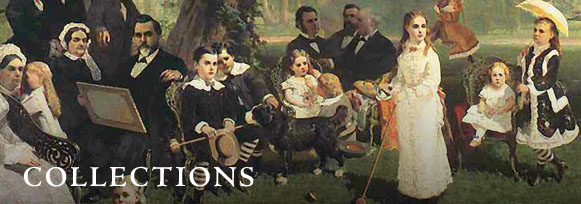The Stanford Family
Newly reinstalled Stanford Family Galleries are now open.
Few American families in the19th century captured the public's imagination as did the Stanford family. Leland Stanford, railroad baron, Civil War governor, and, later, U.S. Senator, and his wife, Jane Lathrop Stanford, were among California's most influential citizens with mansions in both Sacramento and San Francisco. Their country farm in Palo Alto was the centerpiece of more than 100,000 acres throughout the state devoted to experimental stock breeding, viticulture, and agriculture. The tragic death of the Stanfords' only child, Leland Jr, in 1884 at the age of 15, dramatically changed the direction of their lives.
In memory of their son, Leland and Jane Stanford established numerous educational institutions. Foremost today is Stanford University which opened its doors in 1891. The Stanfords also founded a night school for farm employees, kindergartens, an orphanage, and a shelter for working women and their children. The Leland Stanford Junior Museum, built in 1894, was inspired by their son’s interests in antiquities and anthropological artifacts. Leland Jr.’s original collection of Greek and Roman glassware and Egyptian, Asian, and North American artifacts were augmented by the Stanfords' interest in American and European fine arts. By the turn of the century, the Stanford Museum was the largest privately-owned museum in the world and its archeological and ethnological holdings were a rarity on the Pacific Coast. The Stanford Family Collection encompasses 5,000 works.
Bernard Barryte
Curator of European Art
Search collections. Best viewed in Firefox. Download Firefox.
See selections from the Cantor's collection in the Google Art Project.











